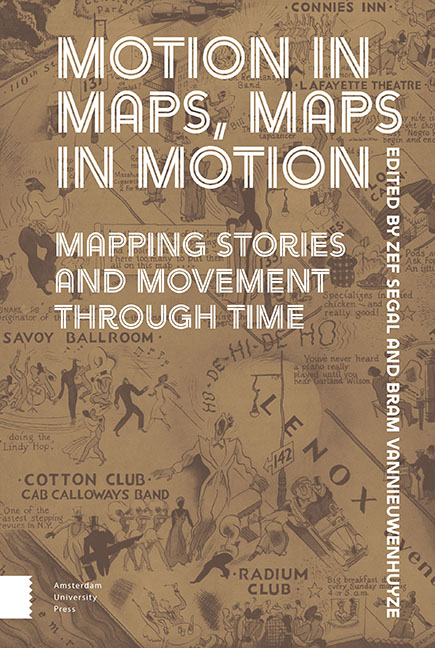Book contents
- Frontmatter
- Contents
- List of Figures
- List of Diagrams
- Introduction
- 1 The New World Map and the Old; The Moving Narrative of Joan Blaeu’s Nova Totius Terrarum Orbis Tabula (1648)
- 2 Entangled Maps; Topography and Narratives in Early Modern Story Maps*
- 3 Flow Mapping through the Times; The Transition from Harness to Nazi Propaganda
- 4 The Tensions of Heterochronicity on Cartographies of Imperial Motion in Japan
- 5 A School Atlas as a History Machine: The Bosatlas Online
- 6 Facebook Cartographies and the Mapping of Local History; Storied Maps from the American Middletown
- 7 ‘Change-of-State’ in the History of Cartography
Introduction
Published online by Cambridge University Press: 20 November 2020
- Frontmatter
- Contents
- List of Figures
- List of Diagrams
- Introduction
- 1 The New World Map and the Old; The Moving Narrative of Joan Blaeu’s Nova Totius Terrarum Orbis Tabula (1648)
- 2 Entangled Maps; Topography and Narratives in Early Modern Story Maps*
- 3 Flow Mapping through the Times; The Transition from Harness to Nazi Propaganda
- 4 The Tensions of Heterochronicity on Cartographies of Imperial Motion in Japan
- 5 A School Atlas as a History Machine: The Bosatlas Online
- 6 Facebook Cartographies and the Mapping of Local History; Storied Maps from the American Middletown
- 7 ‘Change-of-State’ in the History of Cartography
Summary
Maps are movement
For many people, maps are still conceived as two-dimensional graphic representations of spatial arrangements, printed or drawn on paper, included in a book, posted against a wall or, more recently, seen on a computer or smartphone screen. From this perspective, maps remain static documents, offering a range of lifeless geodata such as landscape objects (buildings, rivers, roads, mountains, swamps, etc.), surface areas (parcels of land, parishes, communes, cities, states, continents, etc.) and/or their thematic attributes (population densities, outbreak of diseases, levels of education, etc.). The function of maps is limited to location (what is where) and the physical space of the representation (printed or digital) only serves as a receptacle or repository for information. For their part, cartographers tended, and still tend, to map stable phenomena to endow their products with ‘greater longevity if not greater utility,’ and also to shift ‘the burden of dealing with environmental temporality’ to the map users. In other words, ‘[b]y making maps of relatively static features, cartographers may simplify their job, but they largely ignore the fact that time is a vital part of the map user's world.’ As a result of this limited and limiting notion of maps, both movement and temporality are put in the background, stripping cartographic representations of their temporal depth, spatial dynamicity, and, equally important, of their potential and power as storytelling devices.
However, many old and new maps provide far more than just a static representation of spatial arrangements. Numerous examples of maps present narratives (e.g. wars and sieges, natural disasters, building campaigns, and miraculous events) and movement (e.g. traffic flows, pilgrimages, migration patterns, discoveries, weather changes, and trade routes). They visualize a particular (hi)story that happened ‘in’ the mapped landscape or territory, and spread the news of one or more events; they show the directions, extent, and importance of flows of people, goods, physical phenomena, or societal trends. In addition, their production and consumption is always connected to flows of material and intellectual resources.
- Type
- Chapter
- Information
- Motion in Maps, Maps in MotionMapping Stories and Movement through Time, pp. 13 - 32Publisher: Amsterdam University PressPrint publication year: 2020

